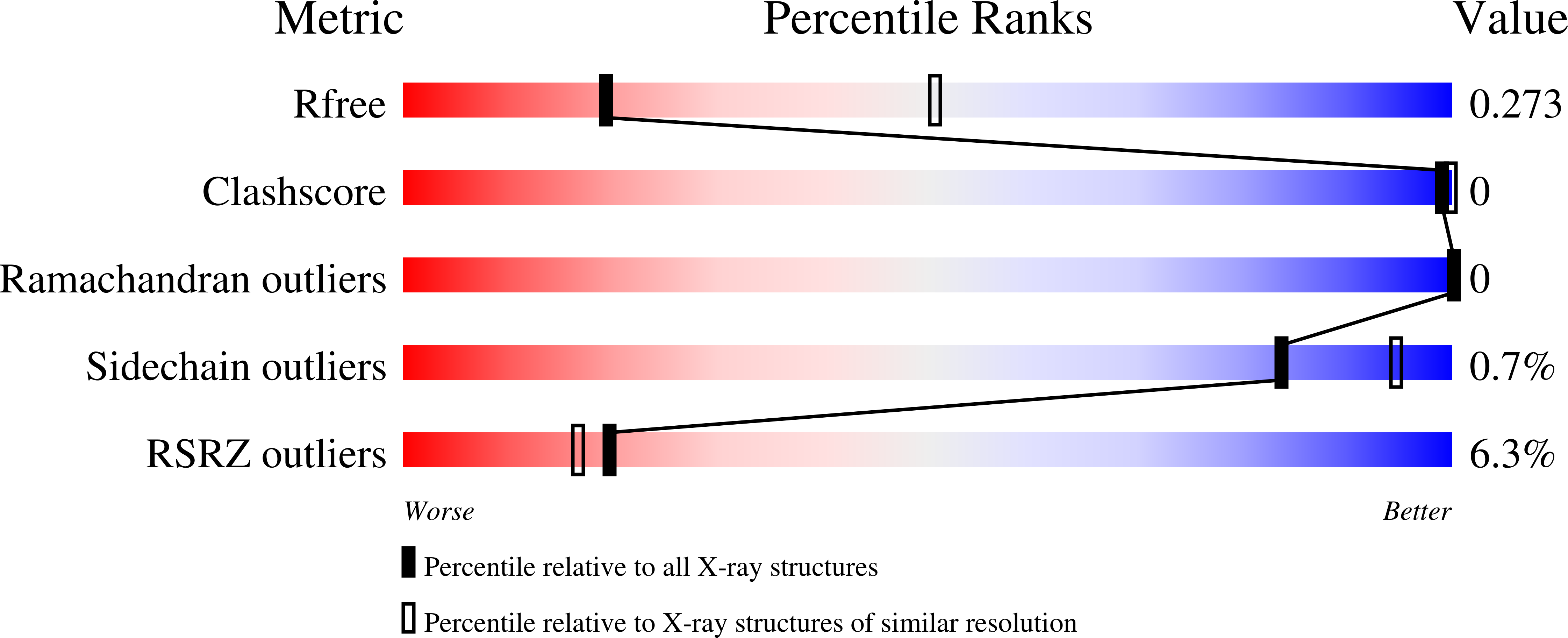EssC: domain structures inform on the elusive translocation channel in the Type VII secretion system.
Zoltner, M., Ng, W.M., Money, J.J., Fyfe, P.K., Kneuper, H., Palmer, T., Hunter, W.N.(2016) Biochem J 473: 1941-1952
- PubMed: 27130157
- DOI: https://doi.org/10.1042/BCJ20160257
- Primary Citation of Related Structures:
5FV0, 5FWH - PubMed Abstract:
The membrane-bound protein EssC is an integral component of the bacterial Type VII secretion system (T7SS), which is a determinant of virulence in important Gram-positive pathogens. The protein is predicted to consist of an intracellular repeat of forkhead-associated (FHA) domains at the N-terminus, two transmembrane helices and three P-loop-containing ATPase-type domains, D1-D3, forming the C-terminal intracellular segment. We present crystal structures of the N-terminal FHA domains (EssC-N) and a C-terminal fragment EssC-C from Geobacillus thermodenitrificans, encompassing two of the ATPase-type modules, D2 and D3. Module D2 binds ATP with high affinity whereas D3 does not. The EssC-N and EssC-C constructs are monomeric in solution, but the full-length recombinant protein, with a molecular mass of approximately 169 kDa, forms a multimer of approximately 1 MDa. The observation of protomer contacts in the crystal structure of EssC-C together with similarity to the DNA translocase FtsK, suggests a model for a hexameric EssC assembly. Such an observation potentially identifies the key, and to date elusive, component of pore formation required for secretion by this recently discovered secretion system. The juxtaposition of the FHA domains suggests potential for interacting with other components of the secretion system. The structural data were used to guide an analysis of which domains are required for the T7SS machine to function in pathogenic Staphylococcus aureus The extreme C-terminal ATPase domain appears to be essential for EssC activity as a key part of the T7SS, whereas D2 and FHA domains are required for the production of a stable and functional protein.
Organizational Affiliation:
School of Life Sciences, University of Dundee, Dow Street, Dundee DD1 5EH, U.K.

















